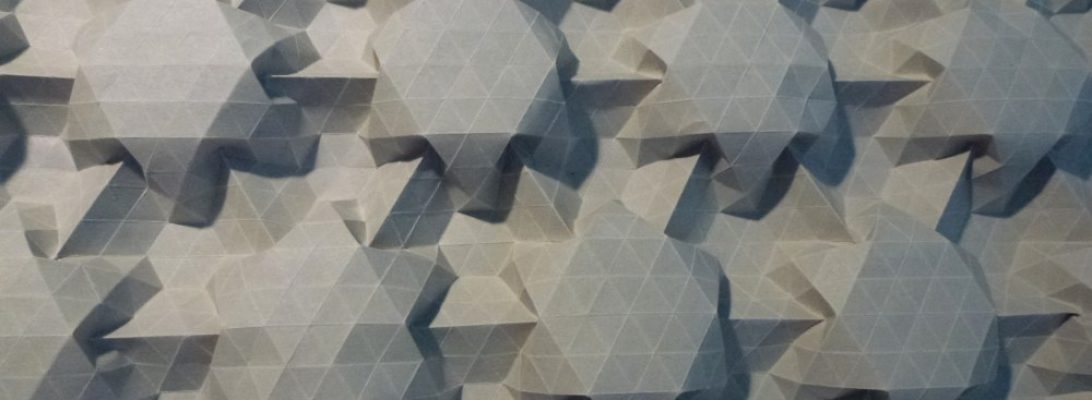A Day With Dion Channer
On Sunday during the weekend the PAQ “All Stitched Up” exhibition opened in Gympie Regional Gallery a fortunate group of paper makers were able to spend the day at Dion Channer’s paper mill. Michelle, Vanessa, Wendy, Sue, Heather, Ann, Joolie, Marjorie and me, Peter were in for a treat with Dion and his partner Sue Purnell. Surrounded by the bush, among music rooms and yurts, pavilions and lakes, Dion’s mill was a large shed with a bespoke collection of gear and infused with the passion of a master papermaker.

Over a morning cup of tea, PAQ members talked with Dion about individual goals and hopes for process assistance, we learned about the available fibres and equipment we would learn to use during the day. Following a tour of his eclectic property, we retired to the mill and began with an orientation.
Gear
Dion showcased his collection of papermaking equipment and the surrounding workshop. He has geared all parts of the process so they can be completed by one person, using dollys, trolleys and such (to save his back). We were introduced to his pulp beaters: He had a “Peter Beater” – a relative of the Hollander with a key difference being a counterweighted beater head designed specifically to “jump” over clumps, rather than being clogged by them. He also had a hammer mill that used a propellor-shaped cam to raise and release the weighted shaft ending in a block, each release turning it slightly to evenly hammer the circular pulp pan at ground level.

Taking up a large area at one end of the shed was his vacuum table – a shallow boxed “tray” with valved drains. The table was lined with a “screen sandwich” consisting of an open fibrous mat, topped with fiberglass mosquito netting, topped with fine cloth. This device was used for pouring thin pulp to build up layers and artisan arrangements of textures and inclusions. The finished artwork was then topped with another sheet of thin material, then capped with a thin plastic sheet. The table plumbing is then connected to a vacuum pump which drags the air out, compressing the layers and excluding most of the water from the piece.

His sheet-making vat was a lovely raised half wine barrel with an integrated drainer rack. Snuggled beside it was a large curved couching table and felt/calico couching cloth rack – clearly set up for production line sheet formation. Around the periphery there were huge mechanical presses, circular ironing machines, storage racks and an esoteric collection of bits and bobs accumulated over a diverse lifetime of papercraft.
Materials

Dion had prepared three fibres for us to use: cotton linters, beaten flecky recycled paper mulberry (kozo), and a pink-dyed mix of recycled fibre. Additionally, during the day he filled his beater and Joolie Gibbs processed some sisal pulp, then some recycled paper was beaten. Such a luxury to have access to a beater for the day. We were shown how to mix up the pulp for use on the vacuum table – a fairly watery mix made slippery with a suspension aid called Neri, and then shown a variety of techniques for how to apply the pulp on the table. The sheet-making vat was initially charged with cotton linters, then as the day progressed recycled kozo was added to change the mix. I took my new mold and deckle (an A3 beauty) and Dion also supplied a couple of different sizes from A4 to slightly larger for us to try.
Workshop

After orientation and basic WHS, we gathered around the vat and learned sheet-pulling techniques. I dutifully made all the mistakes so we could all learn from them, then the group divided into table and sheet makers. We decided, first, to make a full table artwork that the whole group contributed to. The mix of textures, fibres and textures and a fascinating collection of inclusions made for a striking sheet that will, hopefully, make a great display for our group.
After a leisurely lunch and re-hydration, four of our pulp artists had a quarter of the table each to make individual works. I must admit to spending most of my time pulling sheets from the vat – determined to develop a technique that could reliably make uniform sheets. Handling larger frames is more difficult but it was a great experience and I think I was getting the hang of it – learning when the vat needed more fibre, when to add Neri and getting a real feel for the couching was something we had time to repeat and improve. We tried production-line techniques, where one did the sheet formation, another couches and layers felts gave us a feeling of how hard work it would be to do for a long period of time (and how much physiotherapy you would need to correct postural conflicts).

The papermaking process is one that takes time – we made a giant stack of sheets and a few vacuum table artworks that will need to be pressed, dried and finished – Dion kindly offered to do this for us. Joolie will bring back to a future meeting the fruits of our day in the paper mill and I am very excited to see how it all turned out. On behalf of the lucky PAQ members who were able to share his time we express deep gratitude for Dion’s gentle manner, experience, advice and use of a remarkable creative space.


What a fabulous experience Peter, v lucky indeed to be invited into Dion’s world. 😀